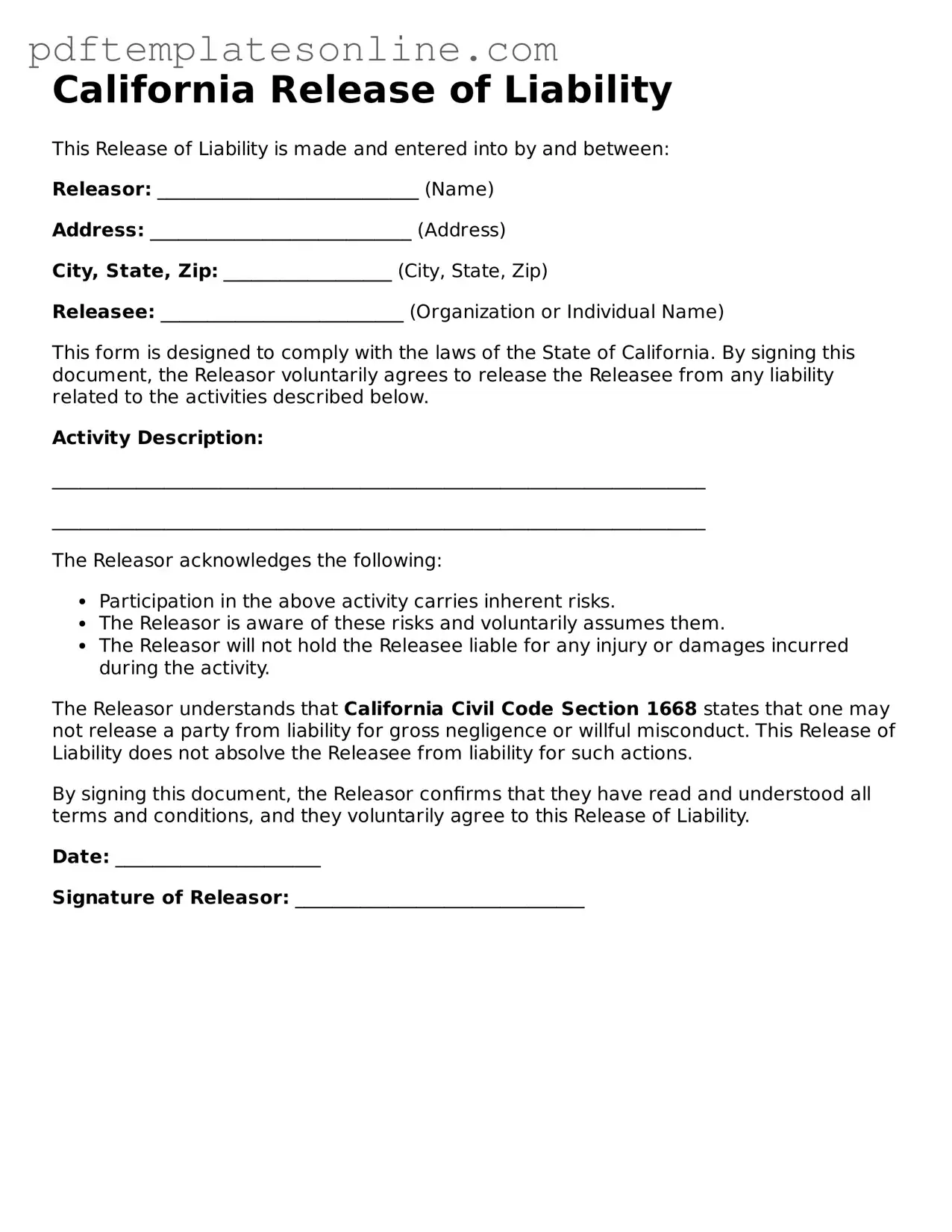Official California Release of Liability Document
The California Release of Liability form is a legal document designed to protect individuals and organizations from claims related to injuries or damages that may occur during specific activities. By signing this form, participants acknowledge the risks involved and agree not to hold the organizers responsible. Understanding this form is essential for anyone engaging in activities that could potentially lead to injury or loss.
Access Release of Liability Editor Now
